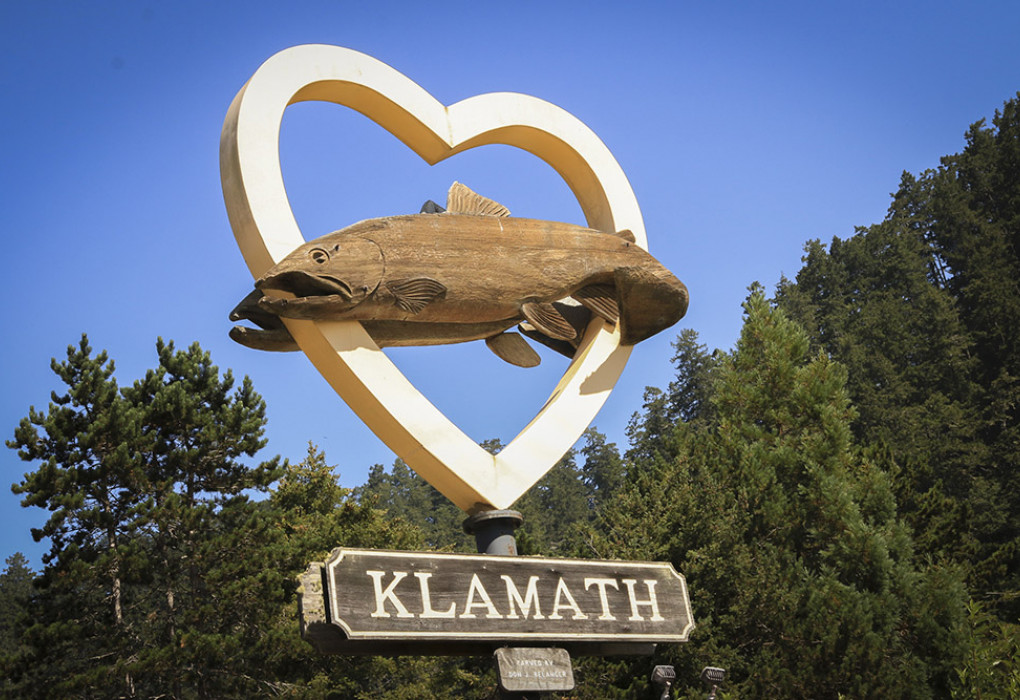A Wild, Free, and Climate Resilient Klamath River
The Native Fish Society exists to revive abundant wild fish for all—for the ecosystems, cultures, and economies that rely on our iconic native fish. In the present era of dam removal, one of the most exciting and long-awaited actions to revive abundant wild fish is the removal of the four lower dams on the Klamath River. NFS River Stewards, Staff, and Members strongly support dam removal on the Klamath River to reconnect wild fish, including steelhead, chinook, coho, and lamprey with more than 400 miles of habitat currently blocked by the dams. This dam removal effort, slated to begin in 2021, will be the largest river restoration in history.
To ensure dam removal revives abundant wild fish as intended, we're also advocating for the removal of Iron Gate Hatchery, which was built below Iron Gate Dam to mitigate for lost habitat, and opposing the reconstruction and use of nearby Fall Creek Hatchery. With the dams removed and the fish reconnected to habitat upstream of the former dam sites, hatcheries will no longer need to serve their mitigation purpose. Additionally, our concern about Iron Gate Hatchery is guided by research on wild fish in the Klamath River, which demonstrates that hatchery fish, which are less fit for survival in the wild, are replacing wild populations. Replacing naturally-regenerating, locally-adapted wild fish with artificially-raised fish, reduces the overall durability of the Klamath fish runs and the fisheries they support.
Our Wild and Free Klamath River Campaign seeks to restore a healthy, free-flowing river through dam removal and investments in habitat restoration and water quality and quantity improvements throughout the basin. We believe that investments focused on reviving a healthy Klamath River will also revive abundant wild fish and the cultures, economies, and ecosystems that depend on them.
Native Fish Society and our partners at Patagonia, Fly Water Travel, and Stoecker Ecological recently submitted comments to the California State Water Resources Control Board regarding the greenhouse gas and energy impacts of hatchery programs as a part of the proposed surrender of the Lower Klamath Project License. A key part of the dam-removal process, the Water Control Board is currently evaluating water permitting, the administration of the federal Clean Water Act, and the impacts and alternatives for dam removal under the California Environmental Quality Act.
Over the past few years, the Water Board has developed a Draft Environmental Impact Report (DEIR) and provided this report to the public for comments. Ultimately, the Water Board will assess all the environmental impacts of various scenarios for dams and hatcheries on the lower Klamath River. The Water Board’s main proposal would remove the four lower dams, but would keep two hatcheries operating for another eight years. However, the DEIR also evaluates a “No-Hatchery Alternative” that would remove the four dams and the hatcheries. Through this EIR process, the Water Board will develop a preferred alternative, which will guide future actions related to the dams and hatcheries on the lower Klamath River.
Native Fish Society and our partners provided extensive comments on dams and hatchery programs during public scoping in July 2018. We provided additional comments on the initial Draft EIR in February 2019. In December 2019, the Water Board recirculated sections of their draft report pertaining to greenhouse gases, air pollution, and energy impacts after receiving a large number of public comments pointing out significant deficiencies in these sections. We expect the Water Board to incorporate these additional public comments and publish a final EIR with a preferred alternative in the spring of 2020.
In our comments submitted earlier this month, we found the draft EIR's analysis of greenhouse gases and the energy impacts of hatchery operations deficient. The draft does not quantify the energy impacts or greenhouse gas emissions of hatchery programs. It effectively treats the two hatcheries that the Water Board has proposed to continue operating as having no emissions. It also improperly compares emissions from the proposed operation of the two hatcheries to the total emissions from all four dams and one hatchery. Finally, it omits critical information about the emissions from the operation of the two proposed hatcheries. As part of our comments, we included examples of frameworks developed around the world to quantify greenhouse gas emissions from farming fish. Emissions from hatchery operations can and should be quantified in this analysis.
Likewise, we found the proposed mitigation for the hatcheries—to purchase and retire carbon offsets for the construction emissions—inadequate. The nature of greenhouse gas offsets is uncertain. Research has found that, even with the most rigorous offset protocols, carbon offsets likely overestimate reductions. Additionally, the draft report fails to justify its conclusion that mitigating operational greenhouse gas emissions from the reservoir drawdown and sediment release would be infeasible.
The omissions and inadequacies in the draft report's analysis undermine a full and robust discussion of the No-Hatchery Alternative. Coupled with the removal of the four lower Klamath dams, the No-Hatchery Alternative would result in the greatest reduction of greenhouse gas emissions and energy impacts. It is feasible and it accomplishes the applicant's stated goals—to take crucial steps to restore the health of the Klamath River and the communities that depend on it.
By focusing on restoring the health of the Klamath River and its wild fish, instead of relying on failed political solutions like hatcheries, we can mend the relationships and health that continue to sustain Tribal Nations and regenerate the great abundance indigenous communities have relied upon for thousands of years. The Klamath River is poised to chart a different path for river and fisheries management in the 21st century as we witness some of the lowest salmon returns on record in the Columbia River and the advancing stressors of climate change. This different path is one we desperately need. The Klamath offers hope and opportunity to its communities and to all those in the Pacific Northwest searching for a revival of abundant wild fish.


